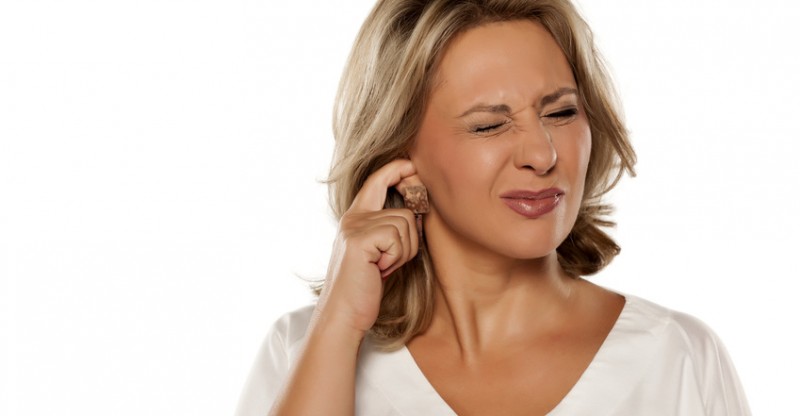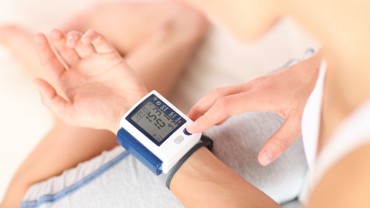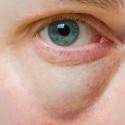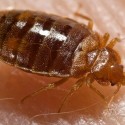How to Remove Ear Wax at Home (10 Easy Ways)
Like many other bodily functions, the production of earwax is something most people rarely give a second thought.
At least, not until it becomes a problem.
The truth is that earwax, also known by the scientific name of cerumen, is a beneficial substance that serves an important purpose.
It protects your inner ears from bacteria, dust and other foreign bodies, and it also helps to lubricate your ear canals.
Unfortunately, a blockage or impaction may cause the earwax to build up, potentially causing irritation or an earache, a sense of fullness or dulled hearing.
This happens to nearly everyone occasionally, but the problem is most pronounced in those with narrow ear canals and those who frequently use earbuds or earplugs.
Infection and ear trauma may also disrupt the normal functioning and removal of earwax, while a deficiency in zinc, magnesium or other important nutrients may cause excessive earwax production.
While none of these issues is especially serious, they may necessitate more careful and more frequent ear care.
If you’ve experienced earaches or other symptoms related to earwax, you may be wondering how to remove earwax safely.
Traditional methods such as Q-tips and bobby pins may exacerbate the situation or even cause an eardrum puncture, but there are safer earwax removal methods.
Check out the home remedies below to discover how to clean your ears quickly, efficiently and safely, but be aware that these remedies should not be used if you have a hole or ventilation tube in your eardrum.
How to Remove Ear Wax
Hydrogen Peroxide
One of the most commonly-cited earwax remedies, there’s a reason hydrogen peroxide is the go-to treatment for so many people.
This household item is extremely effective at softening earwax, and its bubbling action helps to break apart the wax and bring it closer to the opening of the ear.
As a bonus, it’s also a great disinfectant that can prevent or fight back against ear infections.
- Mix equal parts 3% hydrogen peroxide and distilled water.
- Using an eyedropper or cotton ball, place two to three drops in your ear.
- Allow to sit for three minutes before draining.
Rubbing Alcohol and Vinegar
White vinegar features prominently in many home remedies, and its usefulness extends even to treating earwax.
Mixing rubbing alcohol and vinegar accomplishes several things.
It effectively softens and breaks apart the wax, while the vinegar kills off germs and the alcohol causes any trapped water in your ear to evaporate more quickly.
This also makes it useful for treating earaches, which are often caused by earwax or water trapped in the ear.
- Mix equal parts white vinegar and rubbing alcohol.
- Place two to three drops in the affected ear using an eyedropper or cotton ball.
- Leave it for five minutes before allowing to drain. Use a cloth or Q-tip to gently wipe any remaining wax from the outside of the ear only.
Salt Water
Salt water, also known as saline solution, is another highly effective earwax removal remedy.
The combination of salt and water works to soften built-up earwax and dislodge it from the ear canal, where it can then be easily drained out.
Best of all, it’s incredibly simple and virtually always on hand.
- Mix a teaspoon of salt with half a cup of warm water, stirring vigorously until the salt is dissolved.
- Using an eyedropper, put a few drops of salt water in your ear.
- Give the solution about five minutes to work, then turn your head to drain your ear thoroughly.
Baking Soda
Also known by its chemical name of sodium bicarbonate, baking soda is a safe and powerful tool for treating an ear that’s blocked up by earwax.
By making a solution of baking soda, you can soften the earwax in your ear and make it much easier to remove safely.
Bear in mind that this process may be done more than once if needed.
- Dissolve a quarter teaspoon of baking soda in two teaspoons of warm water.
- Place a few drops in your affected ear using an eyedropper.
- Allow the solution to sit for at least ten minutes.
- Tilt your head and allow the mixture to drain out completely.
Baby Oil
Baby oil is a highly useful substance composed primarily of mineral oil.
It’s a great way to soften hardened earwax, and its lubricating properties may also aid in removing the wax.
If you’re particularly sensitive to fragrances, you may wish to opt for a fragrance-free brand for your comfort.
- Using an eyedropper, deposit a few drops of baby oil in your ear.
- Gently place a cotton ball in the ear opening to prevent the oil from seeping out.
- After five minutes, tilt your head and allow your ear to drain entirely.
- Gently wipe the outer surface of your ear to remove any remaining wax or oil.
Olive Oil
Clearly, oils are particularly favored for treating excess earwax buildup.
Olive oil is no exception, as its properties are very useful for softening and loosening wax in the ear.
Virgin olive oil also packs powerful antimicrobial properties, meaning that it will help protect you against ear infections.
- Use a microwave to heat a small amount of virgin olive oil to approximately body temperature.
- Place three or four drops in your ear and allow it to settle for ten minutes.
- Drain your ear and wipe away any excess oil or wax.
- Alternatively, you can place two drops in your ear before bedtime and leave it in overnight.
Omega-3 Fatty Acids
You probably know that Omega-3 fatty acids are beneficial for things like heart disease, cholesterol and skin health.
However, you may not know that they also help treat the buildup of earwax.
Excess earwax is often caused by an Omega-3 deficiency, so adding these essential nutrients to your diet is one long-term solution for treating and preventing this problem.
- Use a quality omega-3 supplement. Ask your doctor about the dosage that’s right for you.
- Consume healthy foods that are rich in omega-3s. Recommended sources include salmon, sardines, walnuts, avocados, cod liver oil and ground flaxseed.
Almond Oil
Like almonds themselves, almond oil offers a whole host of health benefits.
One of those benefits is the ability to treat earwax buildup and the earaches it often causes.
Almond oil softens and lubricates the wax, and it’s also a mild anti-inflammatory that can sooth irritated skin or ear canals.
- Allow a small amount of almond oil to warm to room temperature.
- Place four to five drops in your ear using an eyedropper.
- Allow the oil to work for 10-15 minutes.
- Let the oil drain out and gently remove any residual oil or earwax with a cloth.
Glycerin
A natural byproduct of the soapmaking process, glycerin has long been recognized as a safe home remedy for removing earwax from the ear.
Glycerin is an excellent natural moisturizer and lubricant, and it will effectively soften hardened earwax in the ear canal.
It also moisturizes the ear canal itself, which may help prevent a reoccurrence of impacted earwax.
- Using an eye dropper or cotton ball, place three to four drops of glycerin in your ear.
- Gently insert a cotton ball into the opening of the ear to keep the glycerin in place.
- Let the liquid soften and break down your earwax for two to three hours.
- Allow the glycerin to drain before wiping and drying the ear thoroughly.
Warm Water
The simplest home remedy of all is also one of the most effective.
Flushing your ear with warm water is a foolproof way to break up earwax and remove it with as little hassle as possible.
However, be sure to use only clean, filtered water to avoid any complications.
Flushing with fresh water is especially effective if used in conjunction with one of the previous home remedies to soften and lubricate the wax.
- Warm some fresh, filtered water to about body temperature.
- Grasp your earlobe and pull slightly to open the ear canal fully.
- Fill a rubber-bulb syringe with water and gently squirt a small amount into the ear.
- Wait 2-3 minutes before tilting your head and allowing the water to drain out.
- Repeat as necessary until no earwax remains.
Precautions
Before using any of the home remedies above, it’s important to take a few precautions.
Never put a liquid inside your ear if you have a perforated eardrum.
Never spray or squirt liquid in your ear with force, since this may cause moisture to become trapped and may even lead to damage to the eardrum.
Be sure to use only liquids that are between room temperature and body temperature, as liquids that are too cold or too hot may cause discomfort and irritation.
Refrain from using Q-tips, bobby pins or other objects except to clean the outermost portion of the ear.
Excessive or impacted earwax can be a real hassle, but treating it at home doesn’t need to be.
If you’ve been wondering how to remove ear wax safely and conveniently, you now know a number of easy and effective methods.
However, treating earwax issues at home may not always be possible – or advisable.
If the earwax buildup is accompanied by acute ear pain or signs of infection, see a doctor promptly for professional care.
A professional consultation may also be the best course of action if the earwax is unable to be removed, or if the problem is a regularly recurring issue.
Conclusion
Now that you know how to clean your ears with a few simple supplies you’re likely to have at home, you’re well on your way to eradicating earwax problems!
FDA Compliance
The information on this website has not been evaluated by the Food & Drug Administration or any other medical body. We do not aim to diagnose, treat, cure or prevent any illness or disease. Information is shared for educational purposes only. You must consult your doctor before acting on any content on this website, especially if you are pregnant, nursing, taking medication, or have a medical condition.
HOW WOULD YOU RATE THIS ARTICLE?






I am suffering from an earache, if I got properly all right i shall be very thankful to you.
Its really nice. Coz i prefer natual remedies then drugs.